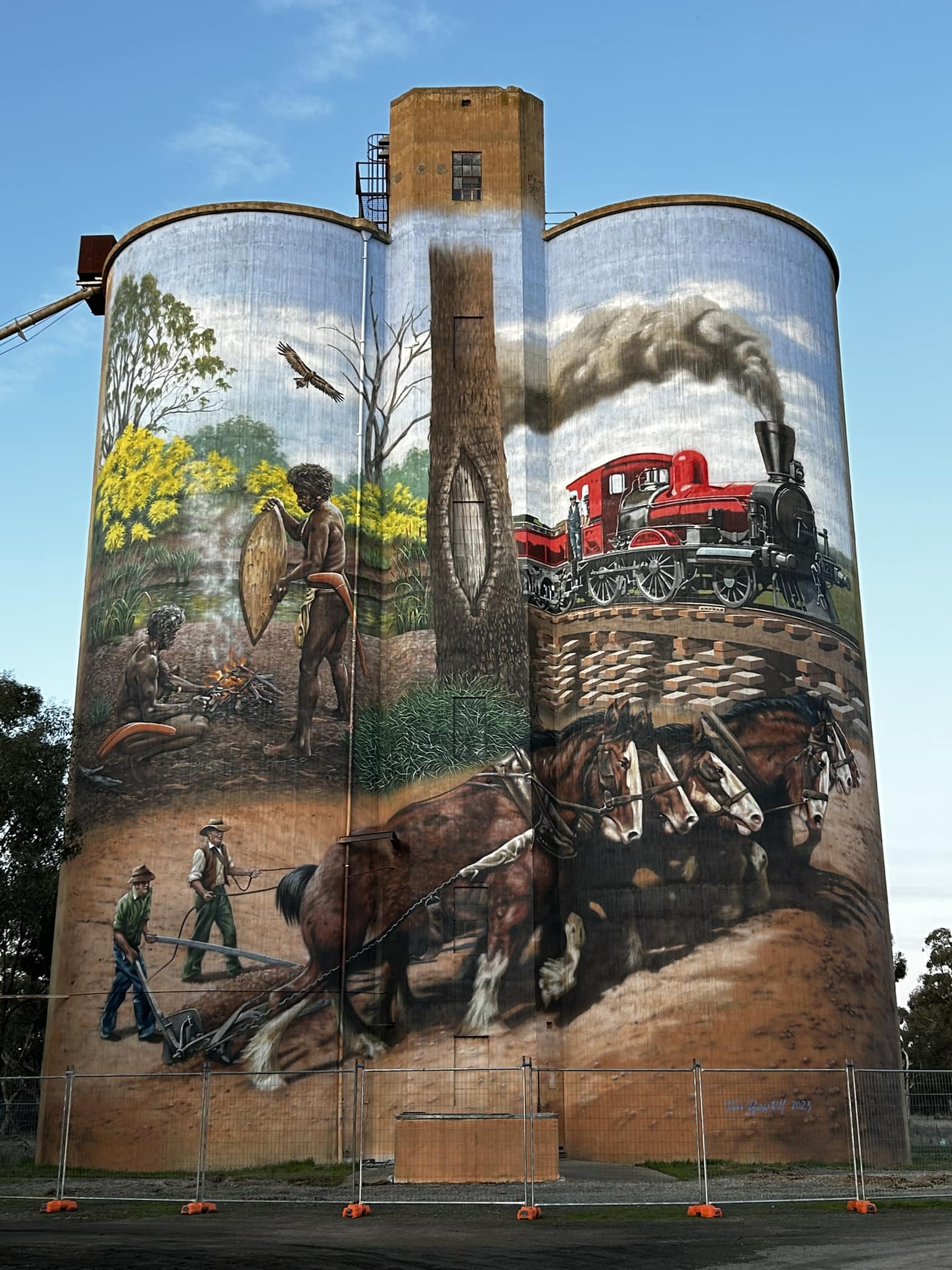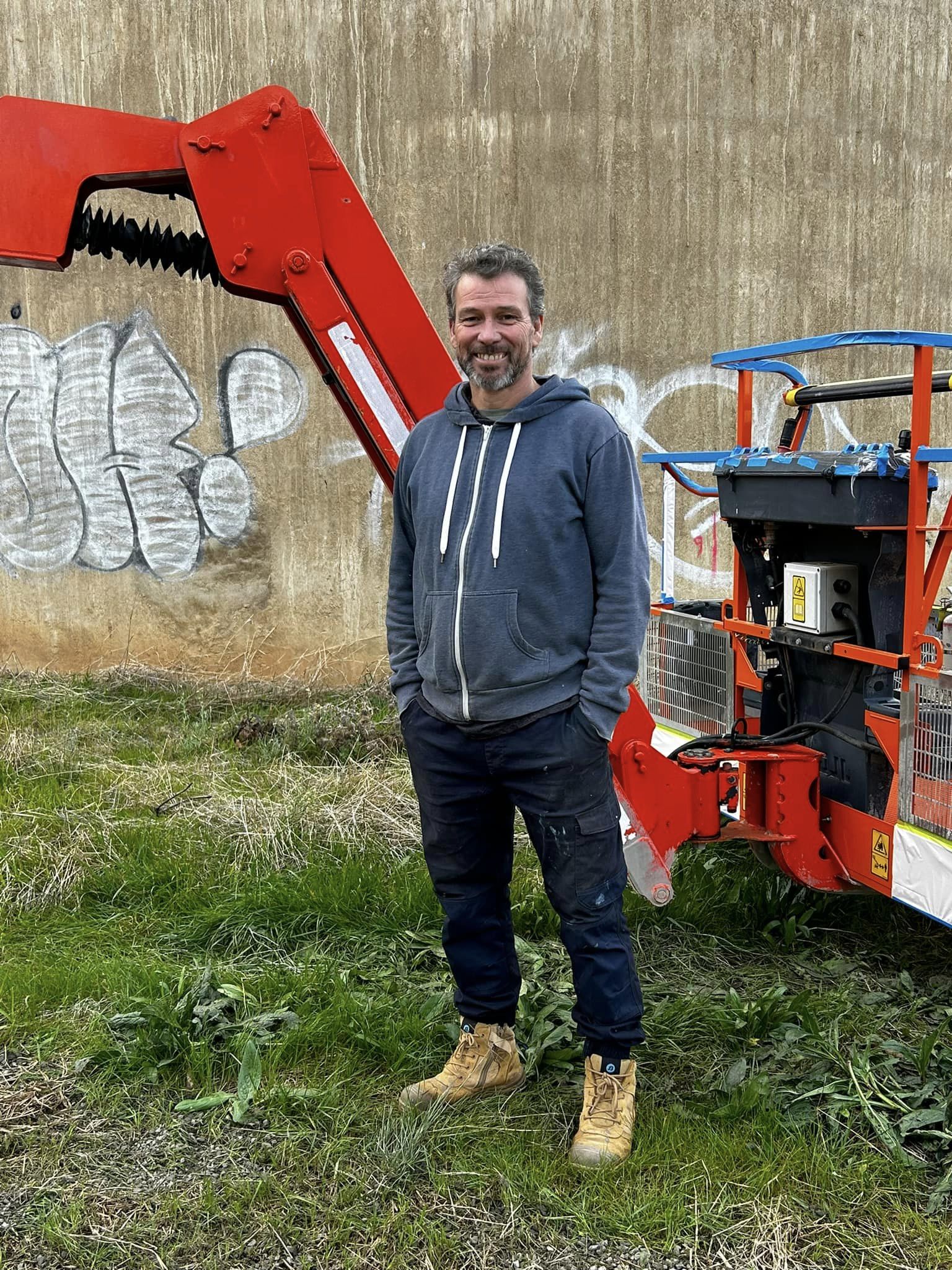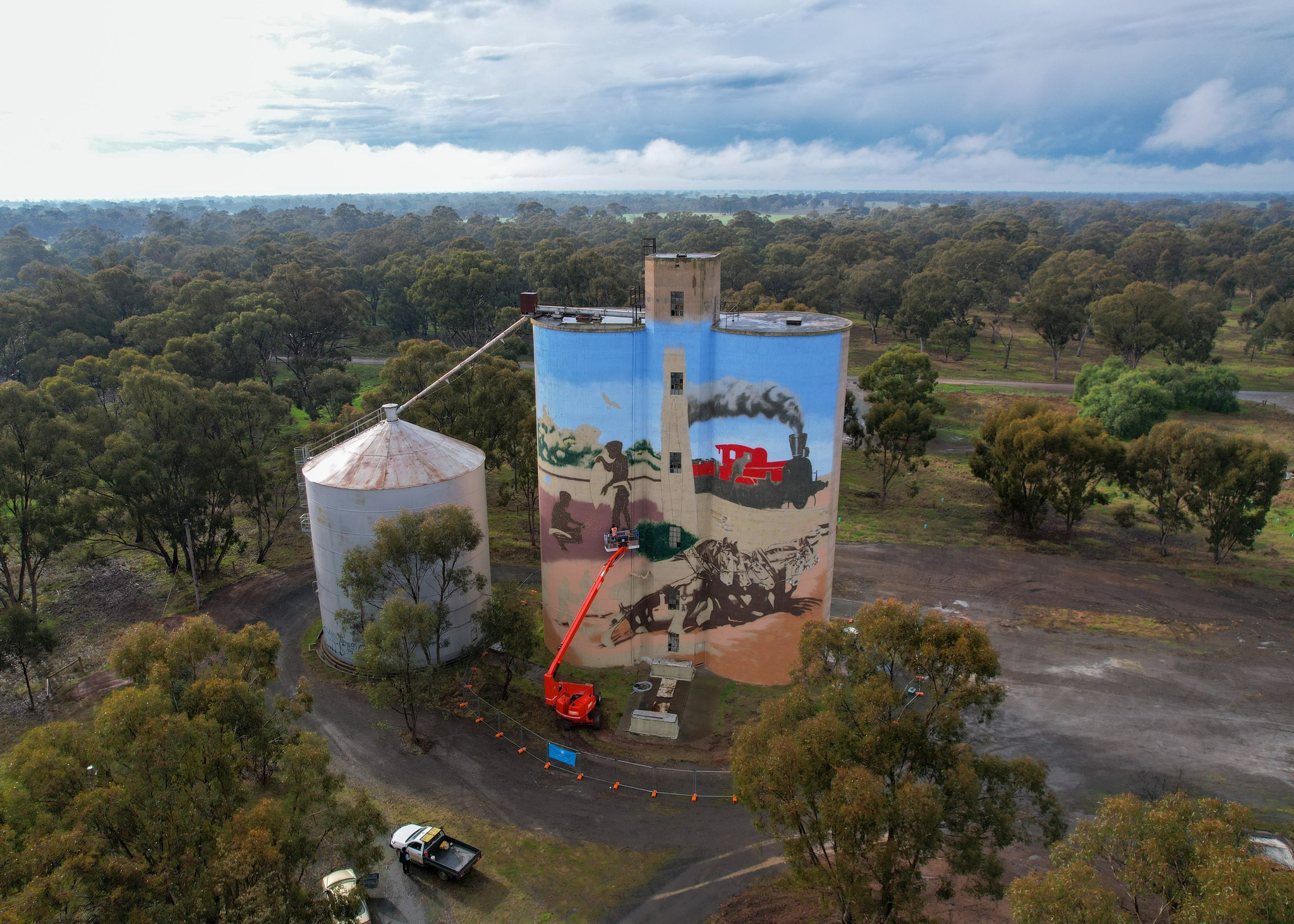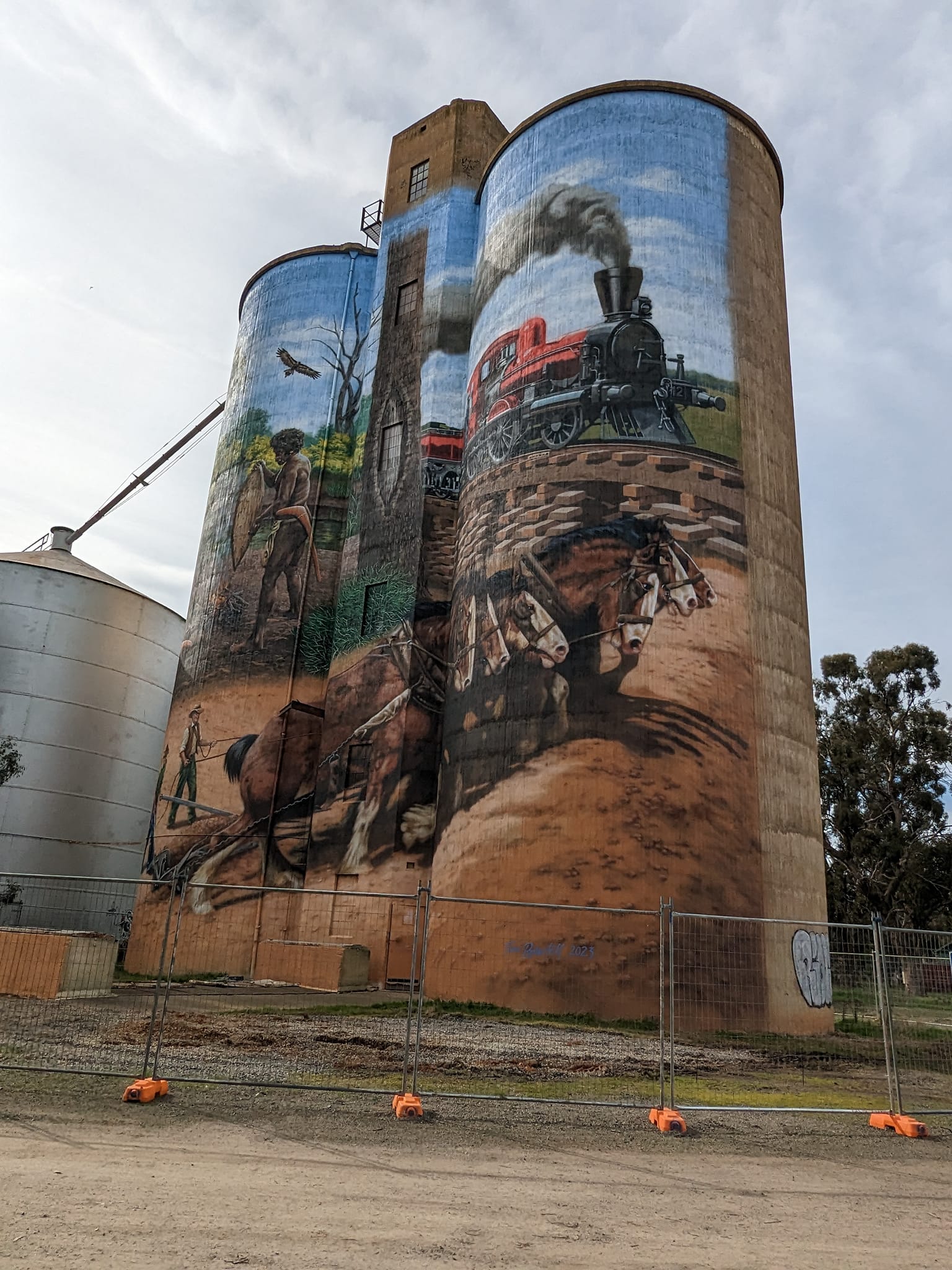Katamatite Lions fund huge Silo Art Project
Since the first appearance of silo art in 2015, regional and rural towns across Australia have been transformed by these large-scale public artworks.
And now, thanks to the local Lions Club, the small town of Katamatite is on the map for their mural on the Silo Art Trail.

Katamatite silo art mural by artist Tim Bowtell.
The Silo Art Trail has been turning heads on dusty regional roads since 2016 with its 700km-long collection of massive street artworks celebrating the people and culture of Victoria’s northwest.
Adding to the popularity of the existing North East Silo Art Trail, the Katamatite Lions Club spearheaded a fundraising campaign for their own silo art project, creating a great opportunity for visitors to enjoy their town.
They have been fundraising for the project since 2019 with kite festivals, raffles, markets and even opening their own Op Shop.
Benalla artist Tim Bowtell is the creative talent behind the Katamatite silo art, taking 32 days to complete the mural.

Artist Tim Bowtell ready to get to work.
“A big congratulations to the Lions Club of Katty for many years of hard work, and to Tim for making our vision a reality,” she says.
The Silos are owned by GrainCorp, who along with Moira Shire, have provided a great deal of work and support towards the project.
Julie says they have also worked closely with the Katamatite Historical Society, local indigenous community members, the local Katamatite community and the North East Art Trail Group to form the brief for the artwork.

Katamatite silo art project in progress.
“Artist Tim has blended together several components to the design to form a cohesive composition,” she says.
“The artwork features an eagle which links to the metal eagle in the Lions Park in town. Wedge tailed eagles are native to our local area, but can be elusive to spot.
We pay homage to our traditional owners, noted in our local history book as the Kwat Kwat/ Bangerang.
The left Silo shows indigenous figures camped along the Boosey Creek. A Scar Tree runs down the centre which links the two silos together. These trees still exist in the Broken Boosey State Park surrounding the silos.
The design also features the first passenger train engine built in 1857 which serviced Katamatite in the early days of settlement.
The image that runs across the bottom of both silos is of horses pulling a scoop to form irrigation channels; irrigation opened up the region to farming.”

This project is injecting new life into rural towns and encouraging tourism to the areas, along with gifting Victoria one of the most unique road trip routes in the country.
Julie says she now hopes more people will visit the silos and take in everything the small community of Katamatite has to offer.
You can see more from the project on the Katamatite Lions Facebook Page.



